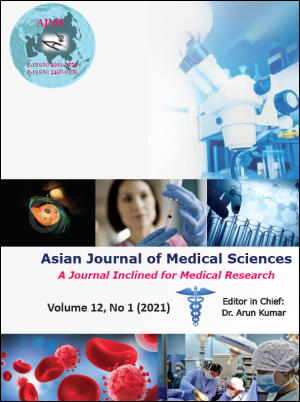Procalcitonin levels versus Microbiological profile in Central line associated bloodstream infections (CLABSI) of patients on Hemodialysis
Keywords:
Central line associated bloodstream infections, Procalcitonin, Chronic kidney disease, Blood cultureAbstract
Background: CLABSI is one of the most common forms of hospital acquired systemic infection(sepsis), associated with high mortality. Although Procalcitonin (PCT) is proved be the earliest and specific marker for the diagnosis of sepsis, there is relatively sparse literature on the usage of this marker in CLABSI with chronic kidney disease (CKD).
Aims and Objective: To correlate the Procalcitonin levels with microbiological profile of CLABSI CKD patients.
Materials and Methods: A retrospective case control study was conducted in a tertiary care Nephro-Urology hospital in Bangalore, from January 2019 to December 2019 including all CKD patients (age>20 years) with central venous catheter undergoing Hemodialysis. Based on blood culture reports of these patients, they were divided into CLABSI (positive growth), and no growth. Procalcitonin was analyzed in both the groups. Statistical analysis was done using SPSS software version 17.
Results: Sixty-one percentage of the CKD patients of mean age 46 years had CLABSI. Most common isolate in CLABSI CKD was Staphylococcus aureus (35%), followed by Escherichia coli (19%), Klebsiella pneumoniae (10%). Mean PCT was significantly higher (p value 0.001) in CP-CKD (Culture positive-chronic kidney disease) patients (36. 1±35.ng/ml) compared to CN-CKD (Culture negative-chronic kidney disease) (4.6±10.0.ng/ml). Also mean PCT for Gram positive (GP) isolates (28.7±30.2) was significantly lower (P value 0.0008) than that for gram negative (GN) isolates (53.6±33.7).
Conclusion: The study highlights higher incidence of CLABSI in CKD patients. Higher PCT values were observed in gram negative bacteria compared to gram positive, indicating its probable role for differentiating CLABSI due to gram-positive and gram-negative bacteria.
Downloads
Downloads
Published
How to Cite
Issue
Section
License
Authors who publish with this journal agree to the following terms:
- The journal holds copyright and publishes the work under a Creative Commons CC-BY-NC license that permits use, distribution and reprduction in any medium, provided the original work is properly cited and is not used for commercial purposes. The journal should be recognised as the original publisher of this work.
- Authors are able to enter into separate, additional contractual arrangements for the non-exclusive distribution of the journal's published version of the work (e.g., post it to an institutional repository or publish it in a book), with an acknowledgement of its initial publication in this journal.
- Authors are permitted and encouraged to post their work online (e.g., in institutional repositories or on their website) prior to and during the submission process, as it can lead to productive exchanges, as well as earlier and greater citation of published work (See The Effect of Open Access).




